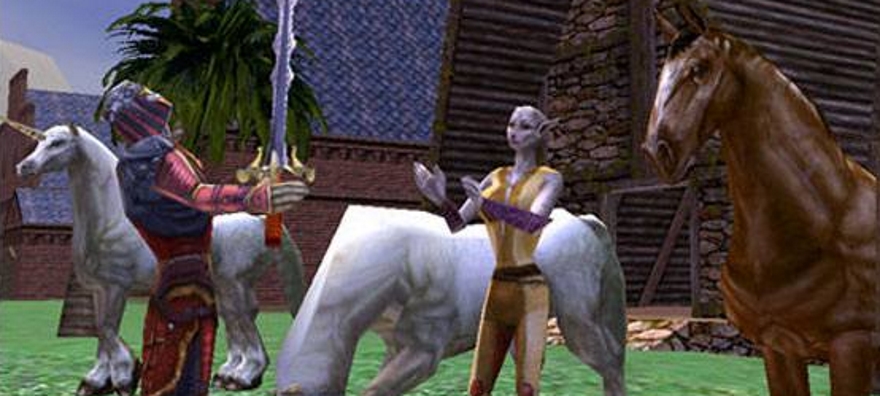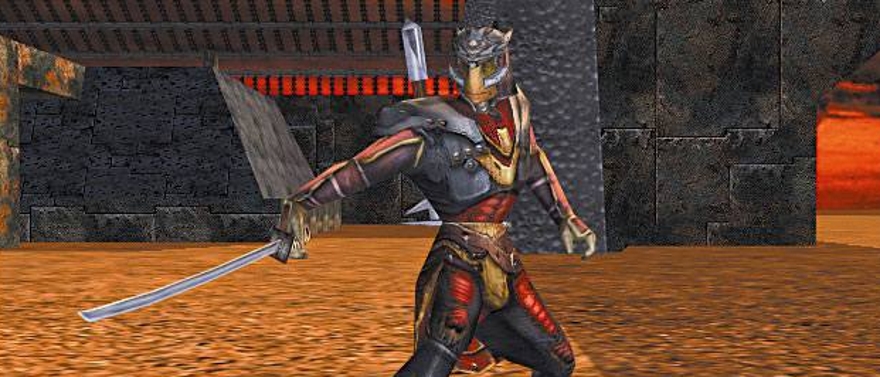
While the heady days of Ultima Online’s dominant position over the industry are long gone, the MMORPG continues to operate and expand, and many players have fond memories of the unique experience that game offered. In fact, some titles like Legends of Aria and (obviously) Shroud of the Avatar are doing their best to claim the unofficial title of “Ultima Online spiritual successor” in the hopes of reuniting veteran MMO players with the special qualities that made this game great.
These aren’t the first games to try to grasp the holy grail of an Ultima Online sequel. There were actually two such projects that went into heavy production in the late 1990s and early 2000s — both ending with premature cancellation and frustration on the part of developers and fans.
The second of these, Ultima X Odyssey, I covered a while back. Today, we’re going to take a look at the first MMO that attempted to mix the Ultima Online formula with a few new twists. Ultima Worlds Online Origin might not be as well-known (or as well-titled), but its history is just as fascinating as UXO’s.

Begging for a sequel
Designed by Origin Systems (Wing Commander) for its parent company EA, Ultima Online was the first MMO to hit 100,000 subscribers and prove to the world that this fledgling genre could actually be something of a cash cow (not to mention hugely popular). While Lineage, EverQuest, World of Warcraft and the many others soon eclipsed the title in terms of sheer numbers, UO would forever hold the title of blockbuster breakout.
It wasn’t long before Electronic Arts started thinking “sequel” — as it was always in the nature of that company to sequelize the heck out of any hit game. And in the case of Ultima Online, it kind of made sense, as UO itself was the latest in a long, long string of Ultima RPGs.
However, one of the drawbacks of being a cutting-edge pioneer is that the Ultima Online team didn’t have a lot of comparisons from which to draw, and so the devs were often just feeling things out in terms of what worked and what didn’t. After a few years’ worth of experience under their belts, the developers had a number of ideas how to do the game even better — and in the new-fangled 3-D that was all the rage.

LF29M!
Originally given the much saner title of Ultima Online 2 and billed as “the second generation of MMORPGs,” Ultima Worlds Online Origin’s development was announced in 1999 with the goal of a late 2000 release. Once again, Origin Systems took the lead on the project and came up with a few fairly interesting ideas as the series leaped into the third dimension.
In an early preview, Gamespot found the MMO to be a step up from its contemporaries: “Ultima Worlds Online Origin certainly looks good; though it uses a third-person, behind-the-back camera view reminiscent of Asheron’s Call’s default perspective, Ultima Worlds Online Origin has a much more detailed world populated with much larger and more highly-detailed characters and monsters.”
Reflecting the often-shifting world of Ultima, UWOO would take place in an alternate timeline to UO, when disasters have reshaped the world and sparked an industrial revolution. Fantasy collided with steampunk in a big way, and anyone entering the game would have to handle the juxtaposition of wizards and clunky robots. Dynamic weather effects were to provide an additional layer of immersion for adventurers.
Three races — the warrior-like Juka, the magical Meer, and the standard Humans — were to be the sole player options. Because characters could no longer cap out multiple skills (or “classes”), grouping was heavily emphasized, with expected gangs of roving players to number between 20 and 30. In making the jump to 3-D, Origin used motion capture to provide lifelike animations for character movement and fights.
It’s tantalizing to think of this world gone unexplored. When one of the technical directors was asked during development about what his favorite effects were in the game, he responded by saying, “Just last week, I saw some gorgeous dragon wings with specular highlights, cool shiny weapons (using a form of environment mapping, for you tech heads), flaming arrows, and a lot more. I can’t really answer this since it changes each week though — there’s that much cool stuff.”
Reflecting the shifting trends of the day, UWOO would be more player-friendly by limiting PvP to consensual duels and specific areas. This was in response to the negative player feedback of Ultima Online’s (then) free-for-all PvP, which was a Big Deal back then.
I can’t kill my best friend in cold blood whenever I felt like it? That’s it, I’m quitting!

Competing with itself
While video game sequels are typically guaranteed moneymakers, the same didn’t (and still doesn’t) necessarily apply to MMO sequels. The fact that UWOO’s development process started rocky and only got rockier helped not one whit.
Following UO’s success, EA commissioned a number of proposed MMOs, such as Wing Commander Online and Harry Potter Online (I’ll wait for you to stop drooling). However, the sequel-ness of UWOO took priority, and EA yanked team members away from other IPs and threw them at Ultima Online 2. For folks used to working on science-fiction, it was too much, and several quit.
Obviously, Ultima Worlds Online Origin didn’t make its 2000 launch date, and by early 2001, EA announced that it was pulling the plug on the project (all of Origin’s projects, actually), axing hundreds of employees, and shifting resources back to Ultima Online. It was then that Richard Garriott resigned from EA to start work on Tabula Rasa along with a number of other ex-Origin employees.
According to Origin System’s David Swofford, the official line is that EA didn’t want to monkey with UO’s success by introducing a competing project: “I think when they saw UO2 they saw a product that was very similar to UO that’s already a proven success, and rather than to continue on with two products paralleling each other, they probably decided to continue the upward movement of the original by throwing more resources at UO and making it even better than it is now.”
Of course, you’d think the studio would’ve thought about that prior to giving the OK to the project. And then again before commissioning a new sequel a couple years later. But those were heady and wild times, full of the unknown.
https://www.youtube.com/watch?v=G7ZEM0Iwf5E
 Believe it or not, MMOs did exist prior to World of Warcraft! Every two weeks, The Game Archaeologist looks back at classic online games and their history to learn a thing or two about where the industry came from… and where it might be heading.
Believe it or not, MMOs did exist prior to World of Warcraft! Every two weeks, The Game Archaeologist looks back at classic online games and their history to learn a thing or two about where the industry came from… and where it might be heading.












